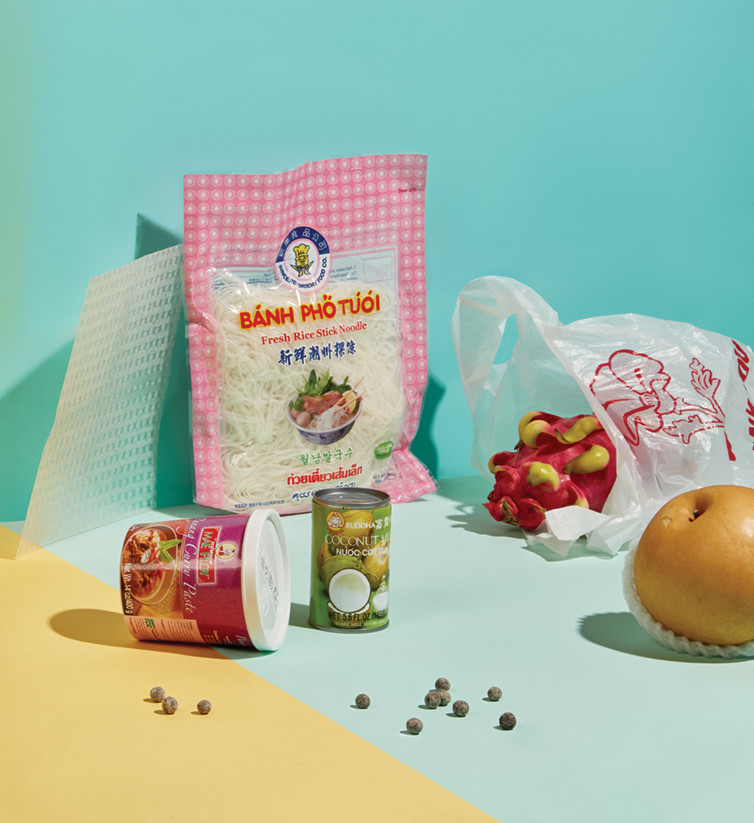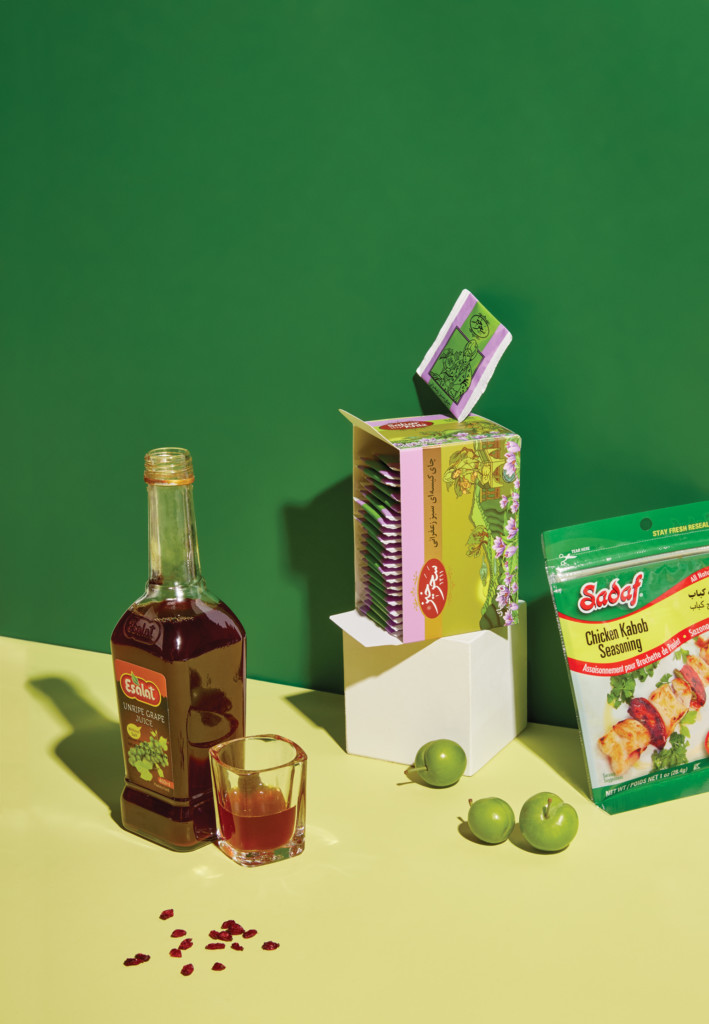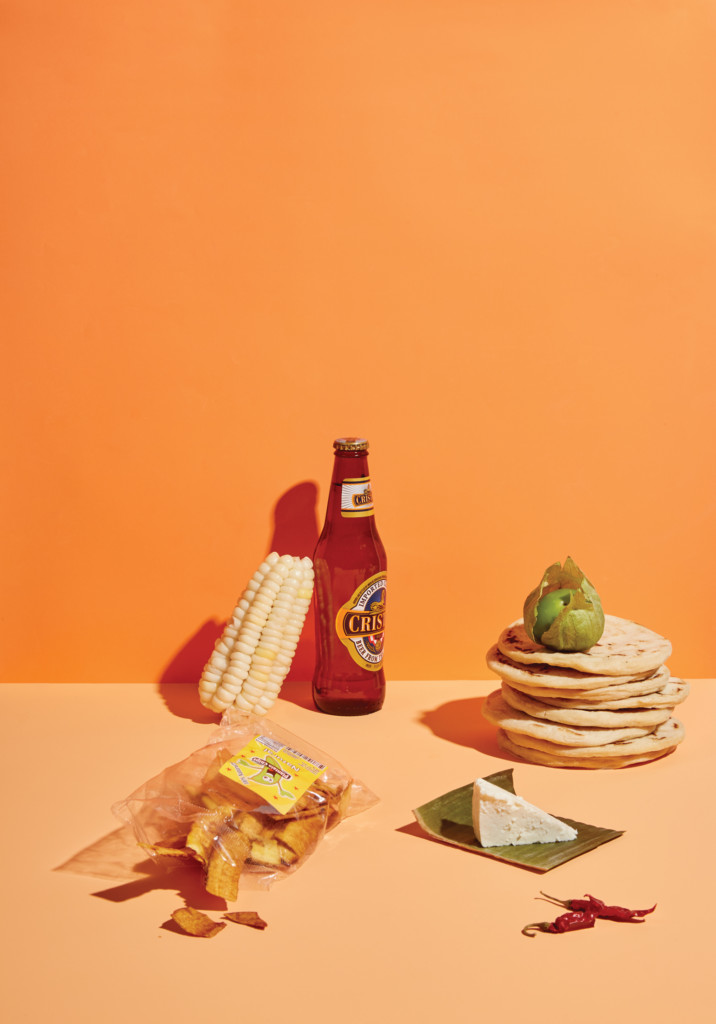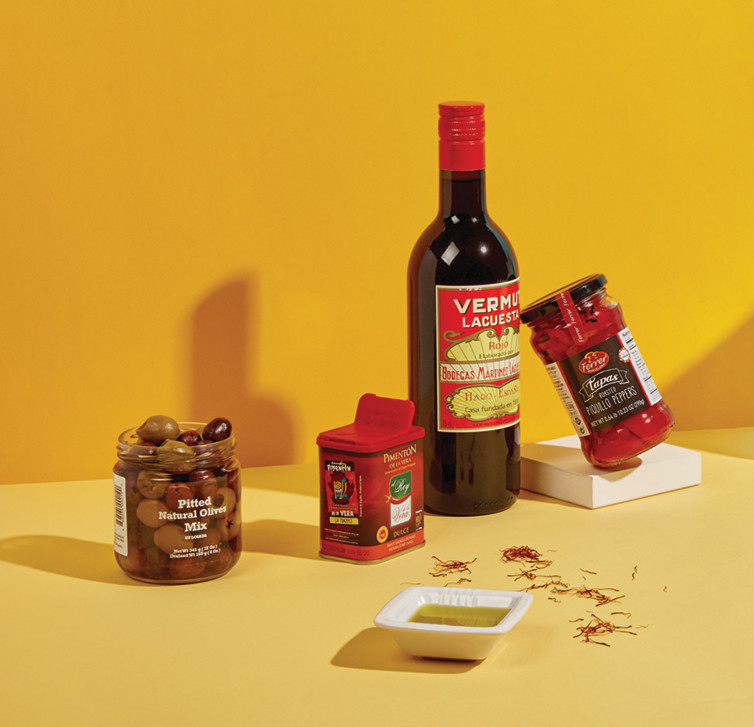THE SPANISH TABLE
Andy Booth grew up in Spain, so it is no surprise that his path to owning The Spanish Table began with an early embrace of that country’s cooking. Years later, after meeting his future wife, Tanya, he worked as wine buyer at the Berkeley Spanish Table. “I said to Steve [Winston] and Sharon [Baden], the original owners of The Spanish Table in Seattle, that I would love to be involved someday,” Andy says. The Booths were brought on as partners for the Mill Valley location when it opened in 2006 and eventually bought out Winston and Baden, cementing their commitment to the country’s food and cuisine.
Andy, who still does the wine buying for the stores, often recommends vermouth and traditional vermouth-paired edible treats. “Historically, every winery had a barrel,” he says, and La Hora del Vermut, or the hour of vermouth, is the Spanish equivalent of America’s happy hour, a time to savor a wine-compatible snack such as sardines with potato chips or olives. “There is not really a cocktail culture in Spain,” Booth says. “Vermouth is drunk straight up.”
Olives and olive oil are central to Spanish cooking, with some variation by region — Arbequina from the northeast, peppery Picual and creamy Hojiblanca from the south and central areas. When it’s heated, the olive oil’s aroma “takes me back to my childhood,” Andy says. He likes the Empeltre olives from Catalonia: “They have a depth of flavor but are not overpowering.” Spain also produces excellent anchovies and the Booths will recommend hand-packed varieties for chopping or eating straight from the can. “We keep them chilled for better texture,” he adds.
Tanya Booth, who runs the logistics of the businesses, says newcomers to the cuisine should start with paella. “The draw is the paella pans,” along with myriad classic ingredients from the Spanish canon — chorizo Bilbao, bomba rice, smoked paprika, saffron and piquillo peppers. To make it seasonal, add halibut or clams in summer plus fresh garden thyme and red peppers, she suggests. And a bottle of Spanish wine, of course.

ASIAN MARKET
Operating a thriving food store for 25 years, Asian Market owners and husband and wife team Alex Ling and Winnie Poon have regularly adjusted inventory to accommodate food trends. “We are on our fourth generation of customers,” says Ling, who came to the business after a career in Bay Area grocery sales. But “we still carry the old-fashioned pickles that some of our earliest customers ask for,” he adds.
Located on a busy stretch of Third Street across from Montecito Plaza, Asian Market mostly stocked Viet and Thai items when Ling first sold products to the previous owner. During a sales call to the shop in 1994, “the owner told me he was ready to sell the business,” he recalls. “Marin was maybe 7 percent Asian then, but there were a lot of Thai restaurants on Fourth Street.” Sensing he could expand to serve the numerous regional Asian food consumers and businesses in the area, Ling bought the store. He still manages inventory while wife Poon runs the register and other day-to-day matters.
With early-morning runs to the produce market near the San Francisco airport, Ling can get a truckload of fresh vegetables to the shop and his other customers in the restaurant industry every day. Fresh Thai basil and galangal, sourced from Hawaii, are staples; spring brings dragon fruit; summer means big-as-a- baby jackfruit. “Everyone asks for it,” Ling says.
Fresh noodles are another standby; Ling stocks chubby Korean-style noodles (which are “trending now”) and countless other varieties in the row of refrigerators at the back of the store, along with Korean kimchi. Shelf-stable ingredients like gochujang, a red chile paste that’s a condiment in Korean cooking, and gochugaru (red chile pepper flakes) are on hand too.
Organized by region, the small shop’s aisles represent the gamut of Asian cuisine: pad Thai sauce and red curry paste for Thailand; sauces by Patak’s, a brand beloved by British expats and Indian-food fans; tamarind, fish sauce and coconut vinegar for the Fijians and Filipinos who come in. After so many customers requested it, Ling brought in gluten-free, MSG-free oyster sauce, but he sells many traditional versions of that Chinese cooking staple too. Spring rolls, that culture-straddling favorite, are especially popular in summer, so Ling expects to be sell- ing plenty of rice paper and fresh basil, mint and mango around now. Coconut milk, needed for curry, soup and almost everything else, is in consistent demand.
Off duty, Ling and Poon like to dine on a dish of Korean rice cakes tossed with kimchi. Banh pho, a rice flour noodle central to the Vietnamese soup of the same name, is another favorite: “I like it with fresh basil and bean sprouts,” Ling says.
What might be the store’s most exotic item is domestically sourced and isn’t in the fish tanks or the vegetable bins. “We get fresh, feet-on chickens from Fresno,” Ling says. “Those are very popular too.”

JASMINE MARKET
Owning a grocery store was a spontaneous idea for Mahsa and Haji Rahimipour. “We were out driving one day and Mahsa was on her phone and suddenly said ‘Jasmine Market is for sale — do you want to buy it?’” Haji says. And soon Haji, previously a professional soccer player in Iran and a former auction-house appraiser in Marin, became a shop owner. He had dreamed of opening a Persian restaurant, long ago: “We thought, food is the one thing that brings everyone together,” he says.
After buying the store in February 2018, the couple went about updating the interior and bringing in products to meet local demand. “We thought: how do we service this community of Jewish, Arab, Persian, Turkish, Greek and Lebanese?” Haji recalls. They brought in chef José Soto from Lavash restaurant in San Francisco to prepare fresh meals of fesenjoon, a slow-cooked chicken stew with walnuts, pomegranate molasses and spices, and gheymeh, a turmeric- and saffron-scented dish of yellow split peas.
Jasmine Market carries Iranian and Spanish saffron; fresh Bulgarian and French feta, a staple of the Mediterranean and the Middle East; and yogurt, which serves as a condiment and a topping for many regional dishes. Haji also makes a point of stocking bright green pistachios and other nuts, barberries, and the many breads, rices and fresh herbs essential to various regional cuisines. Holidays mean seasonal items: “We set up a whole table of dates for Ramadan,” a traditional break-the-fast food at the holy month’s end. For the small produce area, he sources young and fuzzy green almonds in spring and gojeh sabz (sometimes called greengage plums) from the Central Valley; sweet lime and pomegranates; new grapes (ureh); and Bing, pink and sour cherries toward summer.
To fulfill the food-as-community ideal, the Rahimipours, who live in Tiburon, have petitioned for permission to place tables in the courtyard at Montecito Plaza, where the shop is located. And they’re working on getting a grill so chef Soto can prepare fresh kebabs, too.

ROJAS MARKET
Filimon (Fil) Rojas and his two brothers established Rojas Market in downtown Novato in 2003. Later, Fil took over sole ownership and with his wife, Gloria, developed the business into a bastion of Mexican and Latin American products. A second Rojas Market opened in Petaluma in 2015. “Most of our products, you cannot find them in other stores,” says Vanessa Rojas, a nursing student and one of the three Rojas daughters who works at the Novato store.
Pacifico is, of course, a well-known Mexican beer brand, and Rojas Markets sell plenty. But the Pacifico Ballena, or whale, is a 32-ounce standout on their shelf. Malta Goya, brewed from barley and hops, also has a dedicated following and is hard to find elsewhere.
In vast Latin America, culinary traditions vary not just region to region but family to family. Rojas stores stock sour creams from Guatemala and El Salvador because each tastes a bit different and “people like what they like,” Vanessa says. A meat counter offers numerous varieties of freshly prepared and preserved chicharrón and whole pigs for roasting on a spit. You’ll find choclo, the giant corn from Peru, in the freezer; an assortment of moles from Oaxaca; and a plenitude of fresh fruits and vegetables from California farms.
In fall and winter, festive foods include a guava- and cinnamon- infused fruit puree that’s a base for the punch called ponche. Corn masa and banana leaves for holiday tamales snuggle alongside cilantro seeds and an entire wall of chiles, fresh and dried. And fruitcakes, Mexican, Colombian or otherwise, are something people of any background can relate to. 415.892.3860
This article originally appeared in Marin Magazine’s print edition with the headline: “The Spice of Life”.

Christina Mueller is a long-time Bay Area food writer. She hails from the East Coast and has spent way too much time in South America and Europe. She discovered her talent as a wordsmith in college and her love of all things epicurean in grad school. She has written for Condé Nast Contract Publishing, Sunset, and the Marin Independent Journal, among others. She volunteers with California State Parks and at her childrens’ schools, and supports the Marin Audubon Society, PEN America, and Planned Parenthood. When she is not drinking wine by a fire, she is known to spend time with her extended family.


